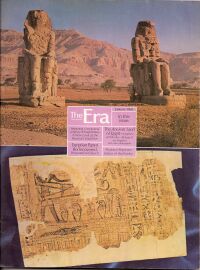
FAIR is a non-profit organization dedicated to providing well-documented answers to criticisms of the doctrine, practice, and history of The Church of Jesus Christ of Latter-day Saints.
(mod) |
|||
| Line 1: | Line 1: | ||
{{Articles FAIR copyright}} {{Articles Header 1}} {{Articles Header 2}} {{Articles Header 3}} {{Articles Header 4}} {{Articles Header 5}} {{Articles Header 6}} {{Articles Header 7}} {{Articles Header 8}} {{Articles Header 9}} {{Articles Header 10}} | {{Articles FAIR copyright}} {{Articles Header 1}} {{Articles Header 2}} {{Articles Header 3}} {{Articles Header 4}} {{Articles Header 5}} {{Articles Header 6}} {{Articles Header 7}} {{Articles Header 8}} {{Articles Header 9}} {{Articles Header 10}} | ||
{{Resource Title|The facsimiles in the Book of Abraham}} | |||
{{summary}} | {{summary}} | ||
{{BofAPortal}} | {{BofAPortal}} | ||
| Answers portal |
| The Book of Abraham |
 |
|
FAQ:
Book of Abraham content: Production: |
|
==
== We don't have all the material Joseph was working with, and until we do (which seems unlikely), we won't know why he interpreted the facsimiles as he did.
====
<videoflash>gCH529IgDrY</videoflash>
Hugh Nibley notes the following,
[I]t is important to emphasize what many Egyptologists are insisting on today as never before, namely, the folly of giving just one interpretation and one only to any Egyptian representation. This is the pit into which Joseph Smith's critics have always fallen: "This cannot possibly represent 'A' because it represents 'B'!" "The value of an Egyptian presentation," Eberhard Otto reminds us, "depended on seeing the greatest possible number of meanings in the briefest possible formulation."3 Heretofore, critics of the Joseph Smith explanations have insisted on the least possible number of meanings, namely one, to every item, and as a result have not only disagreed widely among themselves, but also exposed their efforts to drastic future revision. The Egyptians "considered it a particular nicety that symbols should possess multiple significance," wrote Henri Frankfort, "that one single interpretation should not be the only possible one."4 [1]
There are at least two possibilities here:
For a detailed response, see: A Jewish redactor

FAIR is a non-profit organization dedicated to providing well-documented answers to criticisms of the doctrine, practice, and history of The Church of Jesus Christ of Latter-day Saints.
We are a volunteer organization. We invite you to give back.
Donate Now